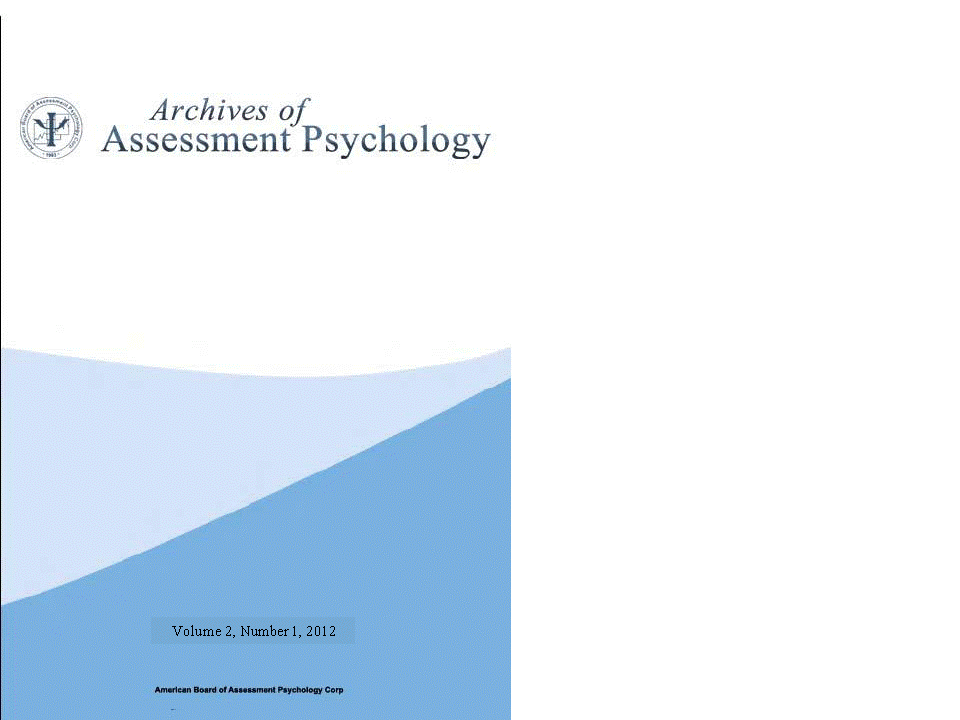Note on truncated T scores in discrepancy studies with the Child Behavior Checklist and Youth Self Report
Abstract
There is an extensive literature on discrepancies between adult informant ratings of symptom severity on the Child Behavior Checklist and ratings by children and adolescents on the Youth Self Report. This article presents an elaboration of a caveat against the use of T scores and for employing raw scores in statistical analyses related to such discrepancies. The T score transformation on these instruments is truncated resulting in reduced variability; this in turn may affect comparability of T scores with data based on the full range of variation. Children and adolescents (N = 236) responded to the items of the Youth Self Report while their adult caregivers completed the Child Behavior Checklist. Mean difference tests between youth and caregiver ratings as well as logistic regression, were done separately for raw scores and T scores; the results illustrated the importance of following the aforementioned caveat.References
Achenbach, T. M. (1991). Integrative guide for the 1991 CBCL/4-18, YSR and TRF Profiles.
Burlington: Department of Psychiatry, University of Vermont.
Achenbach, T. M., McConaughy, S. H., & Howell, C. T. (1987). Child/adolescent behavioral
and emotional problems: Implications of cross-informant correlations for situational specificity. Psychological Bulletin, 10, 213-232.
Achenbach, T. M., & Rescorla, L. (2001). Manual for the ASEBA School?-Age Forms &
Profiles. Burlington, VT: University of Vermont, Research Center for Children, Youth, and Families.
Berg-Nielsen, T. S., Vika, A., & Dahl, A. A. (2003). When adolescents disagree with their
mothers: CBCL-YSR discrepancies related to maternal depression and adolescent self-esteem. Child: Care, Health and Development, 29, 207-213.
Campbell, D. T., & Fiske, D. W. (1959). Convergent and discriminant validation by the
multitrait-multimethod matrix. Psychological Bulletin, 56, 81-105.
Ebesutani, C., Bernstein, A., Nakamura, B. J., Chorpita, B. F., Higa-McMillan, C. K., & Weisz,
J. R. (2010). Concurrent validity of the Child Behavior Checklist DSM-Oriented scales: Correspondence with DSM diagnoses and comparison to syndrome scales. Journal of Psychopathology and Behavioral Assessment, 32, 373-384.
De Los Reyes, A., & Kazdin, A. E. (2005). Informant discrepancies in the assessment of
childhood psychopathology: A critical review, theoretical framework, and recommendations for further study. Psychological Bulletin, 131, 483-509.
Ferdinand, R. F., van der Ende, J., & Verhulst, F. C. (2006). Prognostic value of parent-
adolescent disagreement in referred sample. European Journal of Child and Adolescent Psychiatry, 15, 156-162.
Friedlander, S., Weiss, D. S., & Traylor, J. (1986). Assessing the influence of maternal
depression on the validity of the Child Behavior Checklist. Journal of Abnormal Psychology, 14, 123-183.
Fung, J. J., & Lau, A. S. (2010). Factors associated with parent-child (dis)agreement on child
behavior and parenting problems in Chinese immigrant families. Journal of Clinical Child & Adolescent Psychology, 39, 314-327.
Glaser, B. A., Calhoun, G. B., Bradshaw, C. P., Bates, J. M., & Socherman, R. E. (2011).
Multi-observer assessment of problem behavior in adjudicated youths: Patterns of discrepancies. Child & Family Behavior Therapy, 23, 33-45.
Grigorenko, E. L., Geiser, C., Slobodskaya, H. R., & Francis, D. J. (2010). Cross-informant
symptoms from CBCL, TRF, and YSR: Trait and method variance in a normative sample of Russian youths. Psychological Assessment, 22, 893-911.
Handwerk, M. L., Larzelere, R. E., Soper, S. H., & Friman, P. C. (1999). Parent and child
discrepancies in reporting severity of problem behaviors in three out-of-home settings. Psychological Assessment, 11, 14-23.
IBM SPSS Statistics 20. (2011). Armonk, New York: IBM Corporation.
Leung, P. W. L., Kwong, S. L., Tang, C. P., Ho, T. P., Hung, S. F., Lee, C. C., Hong, S. L., Chiu,
C. M., & Liu, W. S. (2006). Test-retest reliability and criterion validity of the Chinese version of CBCL, TRF, and YSR. Journal of Child Psychology and Psychiatry, 47, 970-973.
Salbach-Andrae, H., Klinkowski, N., Lenz, K., & Lehmkuhl, U. (2009). Agreement between
youth-reported and parent-reported psychopathology in a referred sample. European Child and Adolescent Psychiatry, 18, 136-143.
Thurber, S., & Snow, M. (1990). Assessment of adolescent psychopathology: Comparison of
mother and daughter perspectives. Journal of Clinical Child Psychology, 19, 249-253.
Thurber, S.,& Hollingsworth, D. K. (1992). Validity of the Achenbach and Edelbrock Youth
Self-Report with hospitalized adolescents. Journal of Clinical Child Psychology, 21, 249-254.

